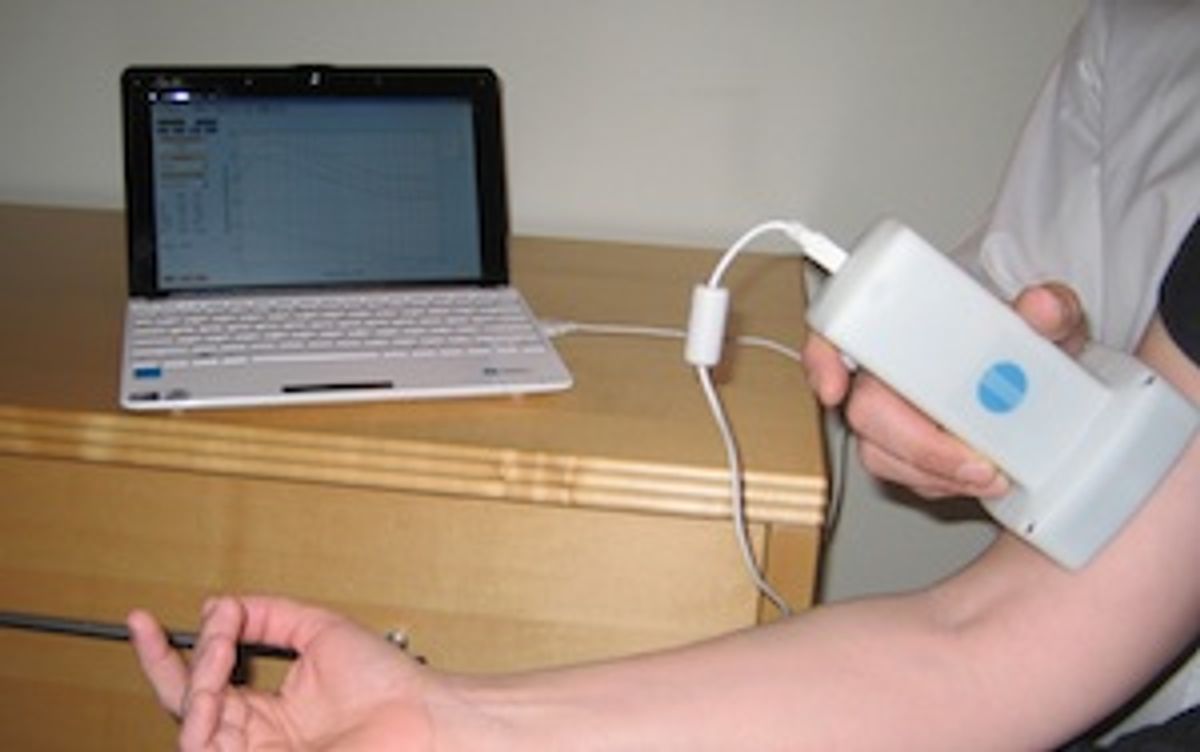Five years ago, the nonprofit group Prize4Life offered $1 million to the first researcher who could develop an inexpensive method for quantifying ALS symptoms. While not a cure, such a tool would make clinical trials of potential ALS treatments much easier. Last week, the organization announced that it would be awarding the $1 million prize to Seward Rutkove, a neurologist at the Beth Israel Deaconess Medical Center in Massachusetts, for his handheld device that assesses neuromuscular deterioration with a method called electrical impedance myography.
As Rutkove points out in a recent review paper, researchers have been using electricity to study nerves and muscles for more than a century. But most studies focused on the nervous system's ability to generate electricity. Impedance analysis--inferring tissue's structural properties based on how electrical current flows through it--was, by and large, relegated to the food and nutrition industries. Rutkove got into the field in 1999 after reading a paper by two physicists who used electrical impedance to study human skeletal muscles. Perhaps the approach could help quantify the damage caused by neuromuscular diseases, such as ALS, he thought.
Within a few years, Rutkove was collaborating with those physicists and had partnered with Joel Dawson, an electrical engineer at MIT, to create a handheld electrical impedance system for clinical use. The method turned out to be a great way to chronicle neuromuscular deterioration: decreases in fat and muscle mass have different effects on resistance and capacitance, creating a disease state-specific electrical signature.
"It's not like it's the fanciest technology," Rutkove told the New York Times, "but I truly believe it will help people." A clinical trial of a stem cell treatment for ALS is already using electrical impedance as an outcome measure, and more are sure to follow now that the technology has won the Prize4Life contest.
Image: The current version of Rutkove's electrical impedance myography system.
Image Credit: Convergence Medical Devices




